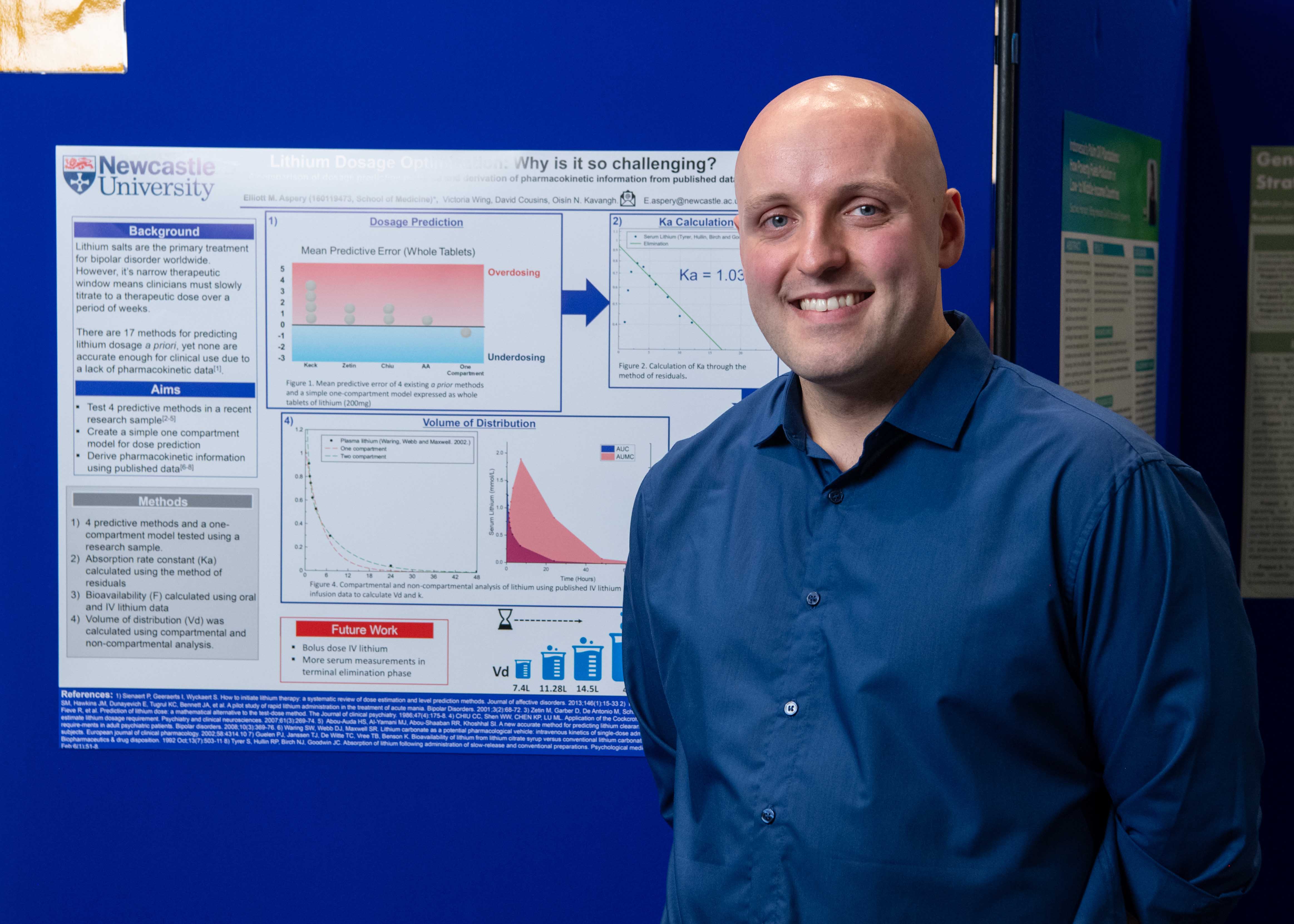Participants
 Elliott Asprey
Elliott Asprey
Lithium has been used to treat bipolar disorder for 70+ years and remains an effective treatment for stabilising mood. Lithium can be a difficult to prescribe because it has a narrow therapeutic window, meaning small increases in dose can causes toxicity. Therefore, careful monitoring of blood lithium levels is needed and it can take months to identify the optimal dose. Various methods have been derived for predicting this, but none are in use.
We attempted to evaluate the effectiveness of 4 existing dosage prediction methods by comparing them to a simple one-compartment model. We then derived key pharmacokinetic information from existing literature, such as the absorption rate constant (Ka) - a measure of how long it takes a dose to be absorbed, bioavailability (F) – how much of an ingested drug is absorbed and volume of distribution (Vd) – a measure of how extensively a drug distributes.
Funded by: British Association of Psychopharmacology
Project Supervisors: Dr Victoria Wing, Dr Oisín Kavanagh and Dr David Cousins
